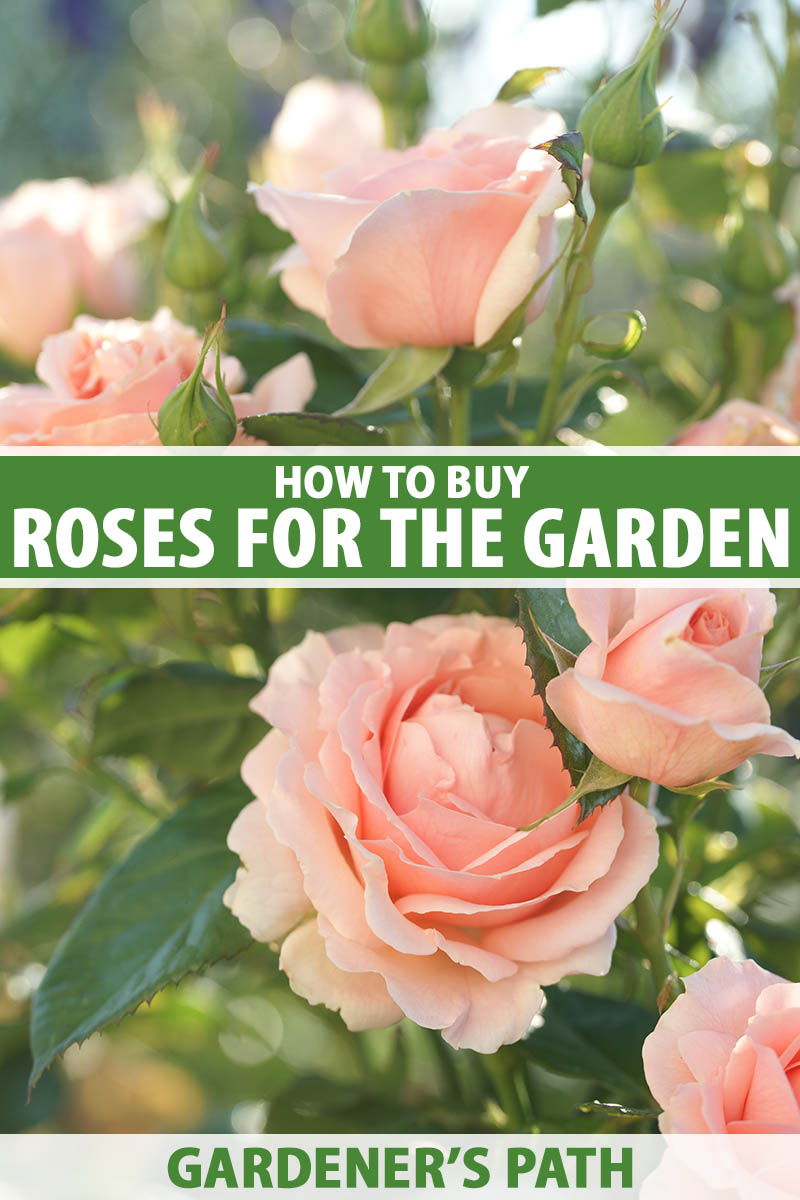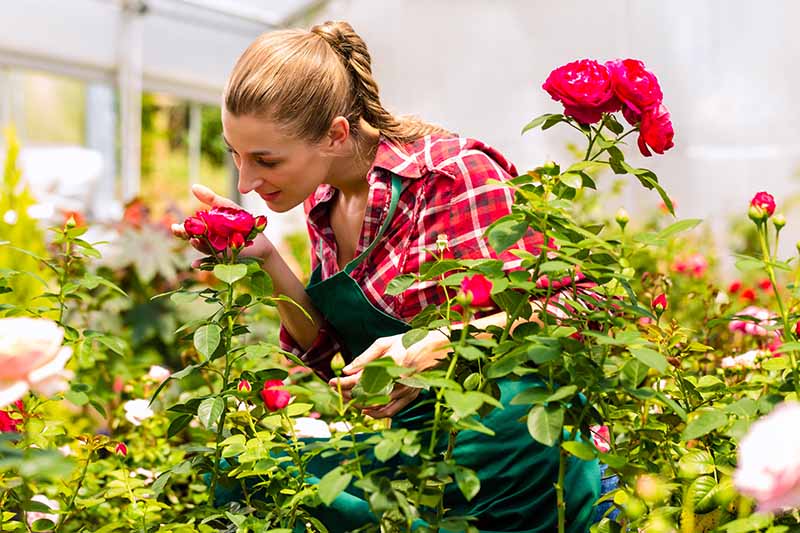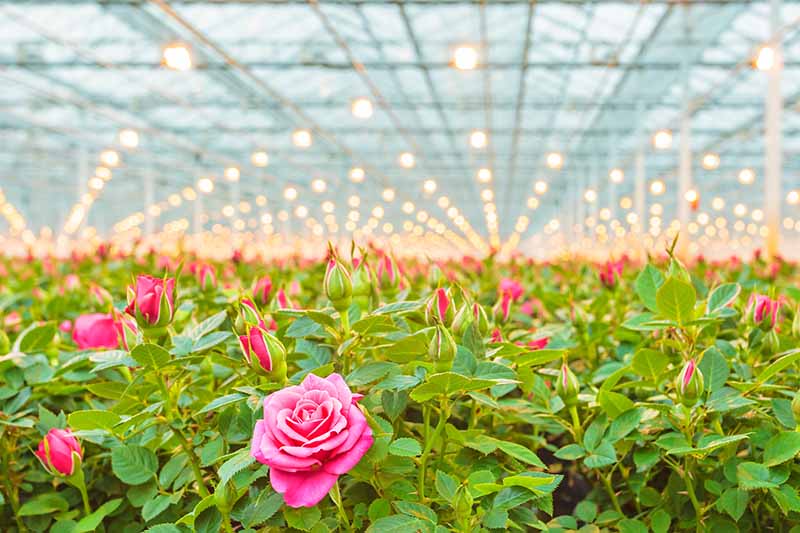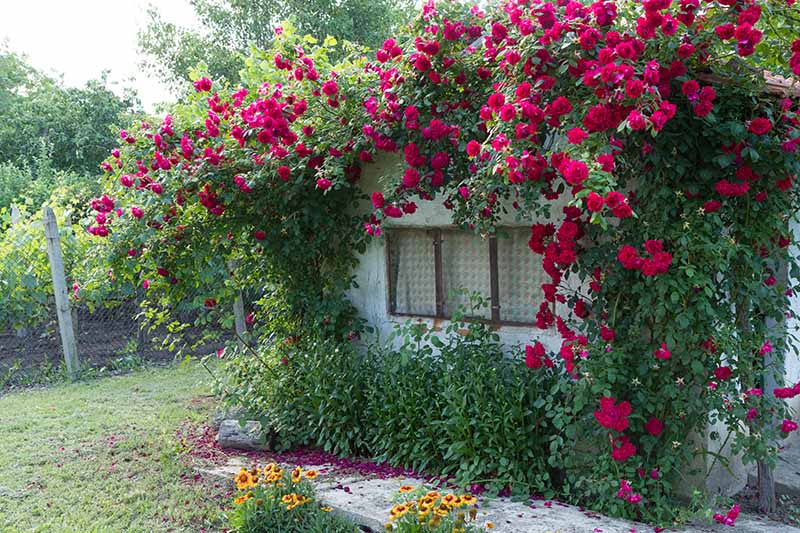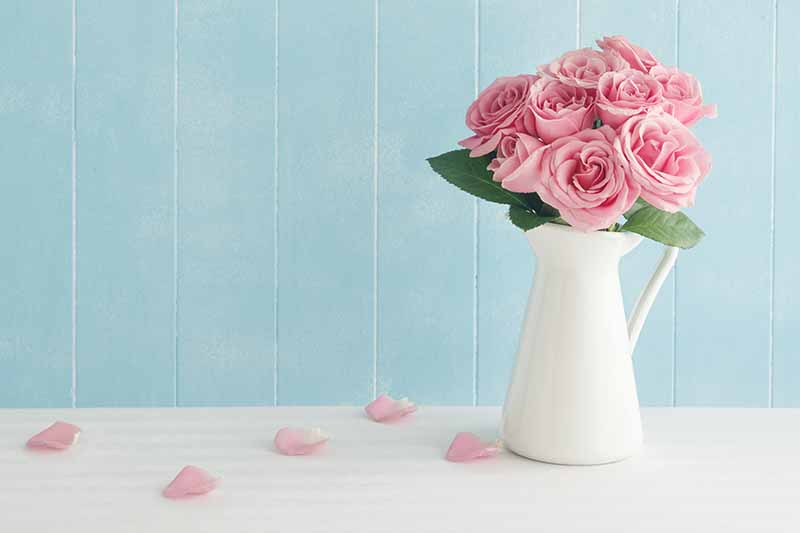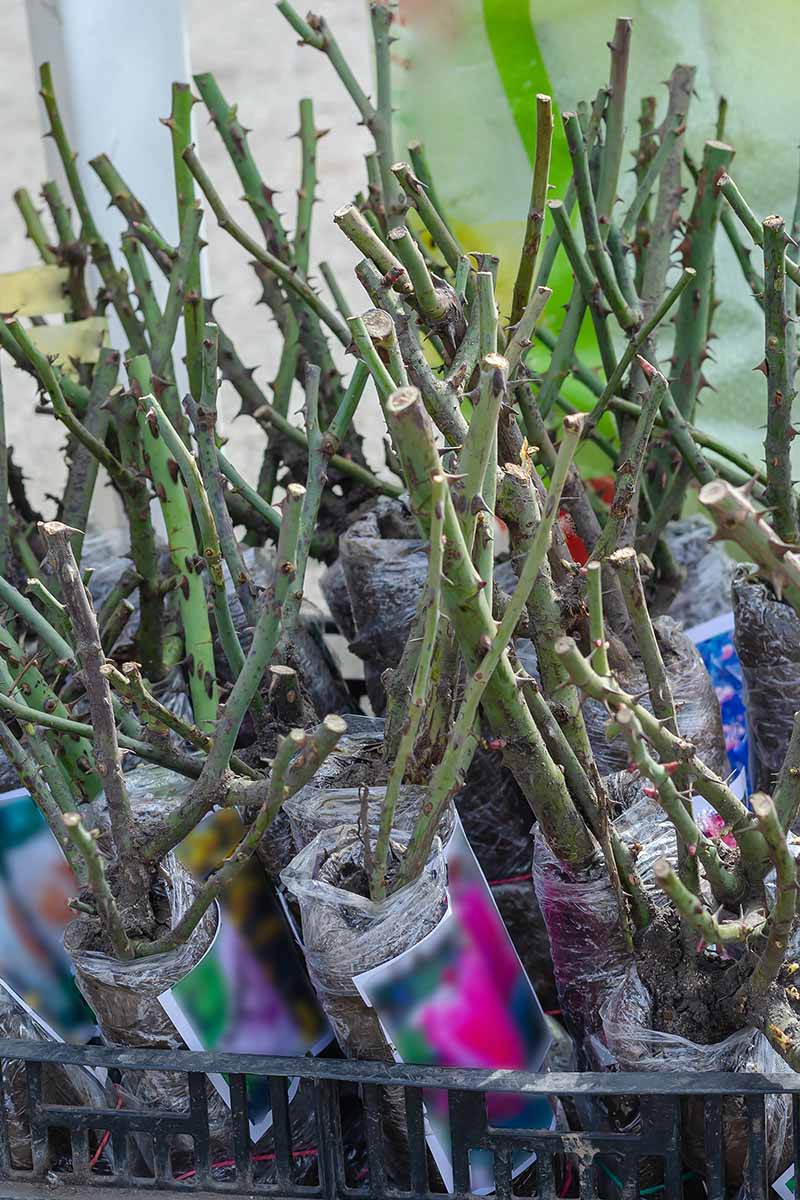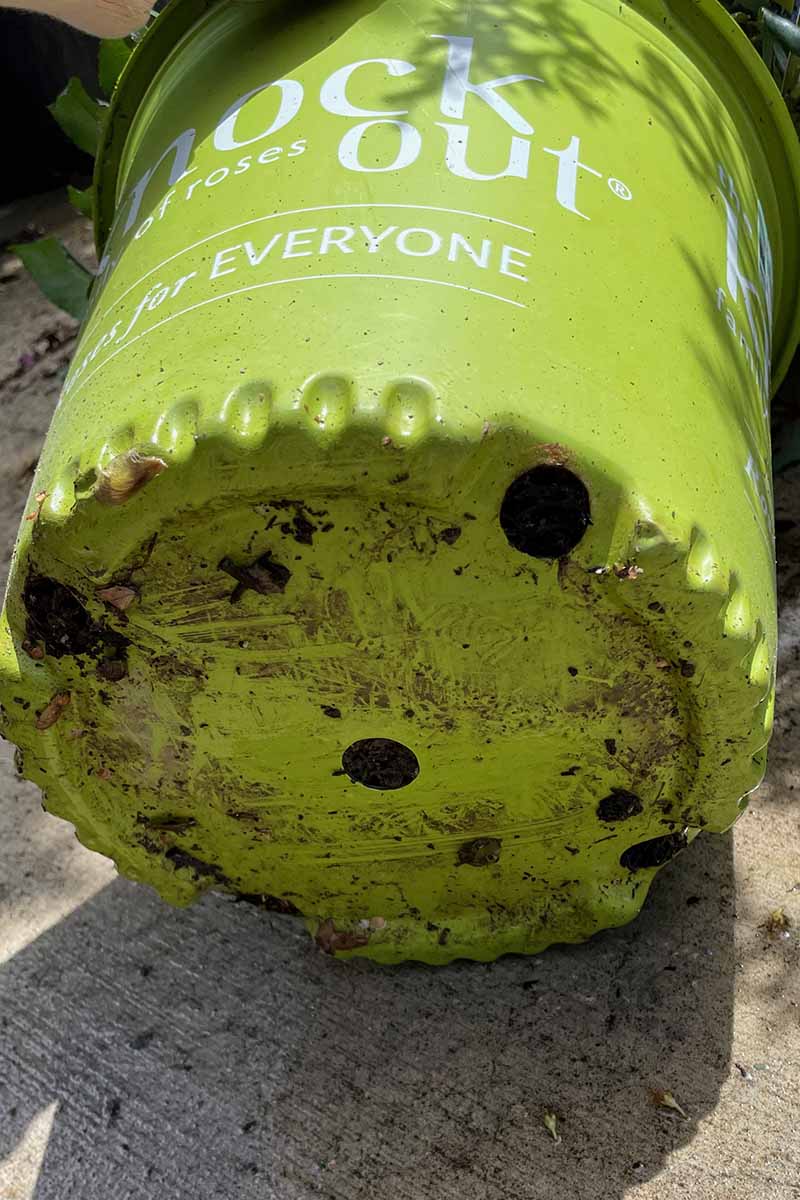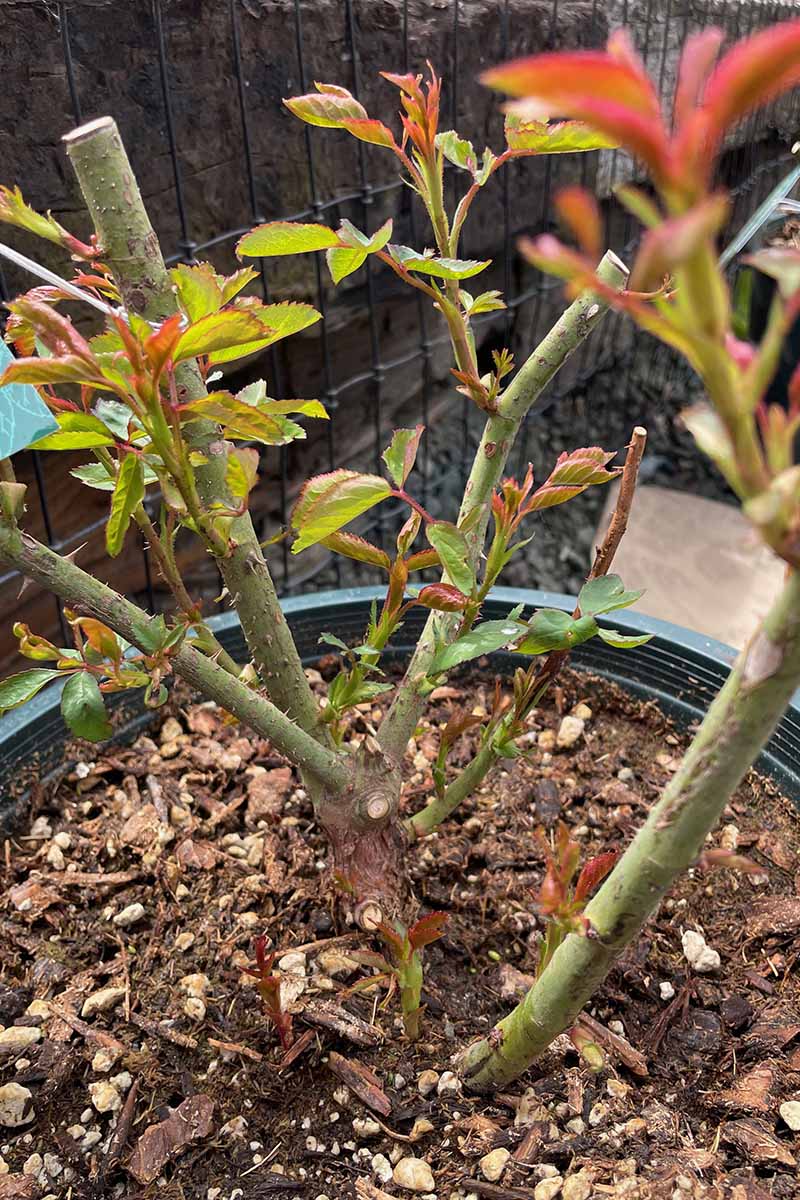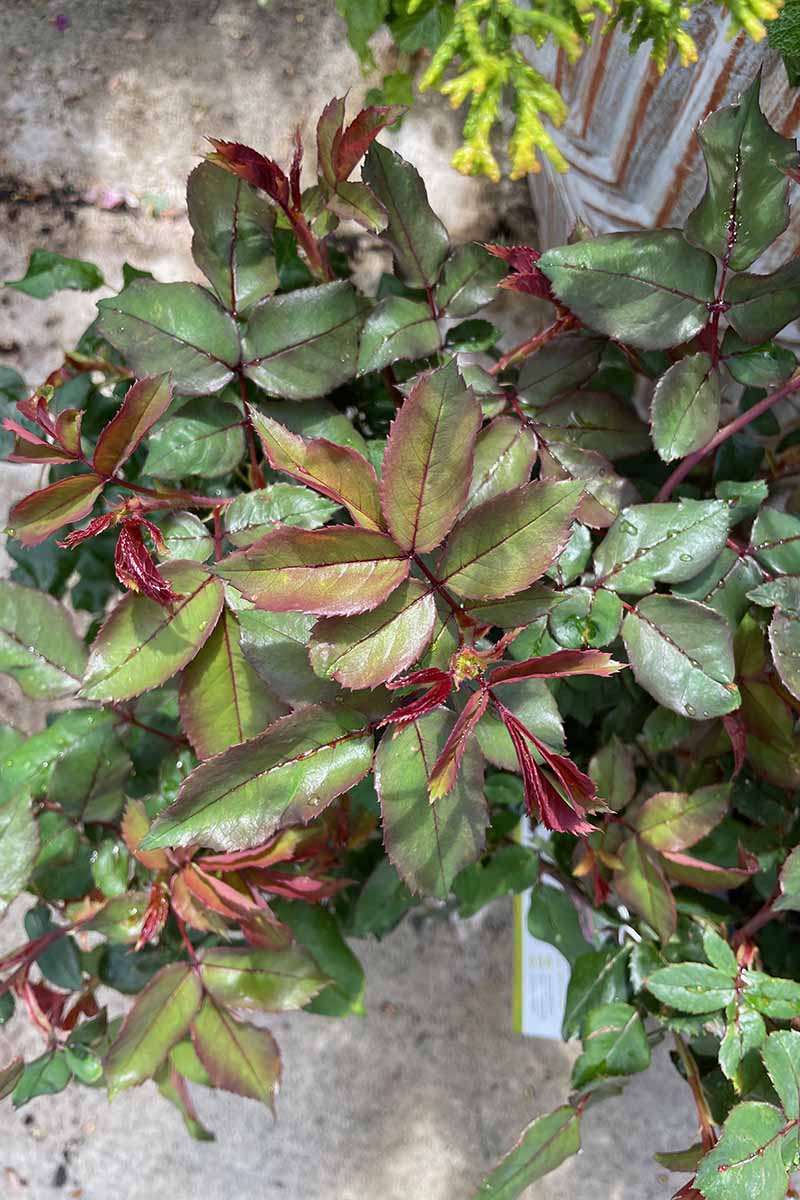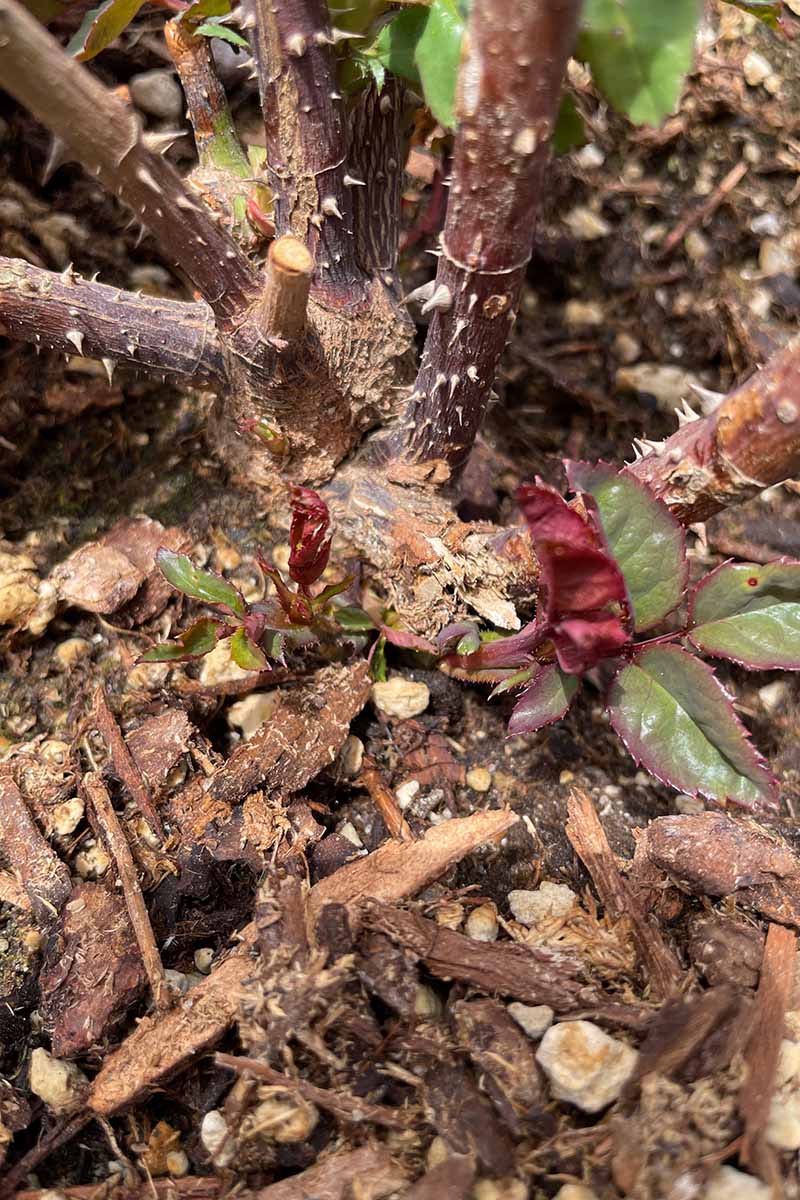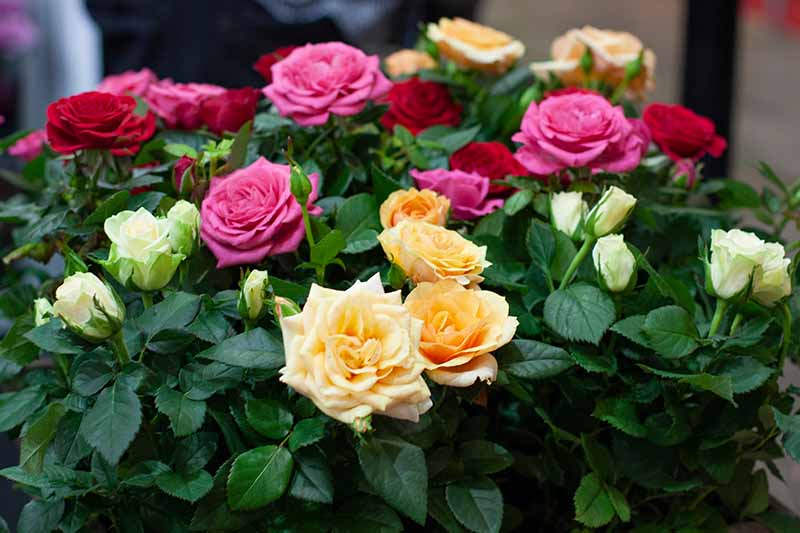I know. It seems like you just go to the store, check out the tag, and pick the one that looks best. You can do it that way, but there’s a better method that will result in less work for you down the road, and happier shrubs in your garden. We link to vendors to help you find relevant products. If you buy from one of our links, we may earn a commission. Instead of heading to the store and letting the rose pick you because it’s what’s available, you can decide what you want ahead of time, and then go out and find the perfect bush. If you’re itching to head to the store, let’s jump in.
Selecting Where to Buy
You’ve probably seen roses for sale at home supply stores and your local nursery, and of course, you can purchase them online. But there’s another place worth checking out first, and that is your local rose society. Every state in the US has at least one rose society. Most of these hold an annual auction or festival where you can not only find some unusual hybrids that you won’t see anywhere else, but you can also find types that do particularly well in your local area. The shrubs are often rooted by volunteers or passionate hobbyists, and raised in your area. Those same people often work the events where these plants are sold as well. At these events, you’re also surrounded by rose lovers, hobbyists, and experts. All this means you can receive some excellent advice and insight into the Rosa variety you’re looking at, as well as any challenges you might be facing in the garden. I know I’m pushing the rose society option pretty hard here, but there’s a good reason for that. You can learn a ton of great information from books and reliable online resources, but you should seek additional information from local experts when possible as well. They’re the ones who know your particular climate, local pests and diseases, and which types will do best. On top of that, many societies make an effort to provide types that have been proven to thrive in their local USDA Hardiness Zone and climate, which makes your decision easier. You should also check with the gift shop at your local rose garden, if you have one. They often have excellent bare roots and potted shrubs available. If you want to save some cash, head to local wholesale nurseries where they grow roses and see if they sell to the public.
Define What You Want
When buying, you first need to define what you want and need. Consider the location that you’re looking to fill, and ask yourself what you want your plant to do in your space. Don’t just run into the nearest store and grab whatever is available. That’s the difference between choosing your plant and letting your plant choose you. For instance, are you trying to hide an ugly gas meter? Then you want something with thick foliage and blossoms, and that doesn’t have thorns (unless you really hate your local gas company reps). Do you want to smell something nice when you have the windows of your home thrown open? Pick a climber with fragrant blossoms that you can train around your window. Or do you want cut flowers for your vases indoors? Old garden or English types are a classic choice. Now think about growth habit and mature size. There are climbing, shrub, and ground cover types. There are those that grow in all sizes, from under a foot tall at maturity to 50 feet tall, so consider your space, and decide ahead of time what suits your needs. You’ll set yourself up for misery if you only have a three foot spot and you pick one that wants to grow six feet wide. Crowded shrubs are more likely to suffer pest infestations and come down with diseases, and they need constant pruning to keep them in bounds. Speaking of making your life easier, be sure to pick one that is suited to your hardiness zone. I know that sounds obvious, but I can’t tell you how many people I’ve tried to help because their rose is struggling, only to find that they picked a type that wasn’t suited to their growing region. I know it’s tempting to choose a plant that you really, really love that’s recommended for a range that’s just one zone off from yours, but you’ll pay for it down the road when you have to baby your bush – or worse, when it dies. Be sure to choose a variety that is pest and disease resistant if you struggle with these issues in your garden, or if you don’t want to deal with them. Many gardeners face rust and powdery mildew every year. Skip the headaches and choose one that is resistant if this sounds like you. Check out our guide to hardy rose varieties for a few suggestions. Sun exposure is another important consideration. Does your selected location receive full sun, or is it partially shady? Be sure to pick one that is happy with the available level of sunlight. Also, think about how much maintenance you want to deal with. Some are self-cleaning, which means that you don’t have to deadhead them. Others only bloom once per season, so you won’t have to be out there deadheading all season long. Some types need a lot of fertilizing and spraying, but others, like species roses, don’t need so much maintenance. Once you narrow your choices down, here’s how to select the healthiest specimen so that you can ensure your new plant will succeed.
Tips for Buying Bare Root Plants
Most plants sold online are “bare root,” and if you start your hunt early in the growing season, you’ll mostly find bare roots. Bare root plants are dormant, which means they’re not actively growing, and the roots aren’t planted in soil. There are several common ways that bare roots are packaged. At some nurseries, they keep them in a box filled with sawdust. Others have them wrapped in cardboard containers or sealed in plastic. This matters because you want to be able to examine the roots and canes. If the roots are wrapped in sealed plastic, there is no way to give them a thorough once-over. Some places will let you open the package to give them a look. If you are purchasing online, make sure they have a generous return policy, since you won’t be able to check them out in advance. When you look at the roots, they should be tan, green, or brown. Black roots are dying or dead. The roots should feel flexible and firm, but not hard. Brittle or dry roots aren’t healthy and may already be dead. The canes should be plump, green, and firm. Avoid any that has lots of brittle, broken, or black canes. You should also stay away from any plant where the canes have started to form new shoots or leaves. This means that it has has emerged from dormancy and this new growth is draining the plant’s vitality. Learn more about bare root roses in our comprehensive guide.
Tips for Buying Potted Plants
Potted roses can either be those that are dug out of the ground and put into a pot, or they can be bare rooted plants that were potted up. They can also be started and grown directly in the pot. You can usually only find live potted plants during the spring, summer, and fall, depending where you live. A quick note: plants are often on sale in the fall and it’s a perfectly good time to transplant them, so you might be able to nab some deals! Check to make sure that the plant isn’t rootbound before you purchase it. It can be hard to tell, but look for roots growing at the surface of the soil, or coming out of the drainage holes. Rootbound shrubs often look a little droopy or yellow. Now, check the canes. They should be thick, firm, and healthy-looking. No black or brittle canes, please. Woody canes are fine, just make sure they have live growth. And don’t worry if the plant doesn’t have blooms on it. Just look at the overall health of the canes and foliage. Red growth is perfectly fine, that’s just the color that most rose leaves and stems have when they are young. Some people suggest you should make sure the plant has a shape that you like, but that’s something that can easily be changed as you prune and shape it yourself in the coming years. Finding a healthy specimen is more important. Touch the soil. It should be moist. If not, this means the grower has been letting the plant dry out, which causes stress. Examine the leaves for insects and any signs of disease. That means spots, fuzzy bits (an indicator of fungus), a coating that looks like wet soot, rusty bits, or yellowing leaves. If you can’t wait to start enjoying those blossoms, pick a plant in a two-gallon container or something larger. These bigger specimens have a more extensive root system and they’ll be ready to burst into bloom faster than smaller ones. Don’t purchase potted roses in the winter. They usually aren’t very healthy because they’re often the leftovers that didn’t sell during the growing season, and things generally won’t improve as they sit around until you can put them in the ground. Grafted (or budded) shrubs may send up suckers that are the rootstock type, rather than the scion type on the top. Left unchecked… surprise! Now you have a totally different rose growing in your garden than you originally had. Places like Nature Hills Nursery sell both bare root and potted roses, and they guarantee them.
Choosing Own Root vs. Grafted
A majority of roses sold at home goods stores or major nurseries are grafted. That means the rootstock is a different type than the top part (the scion). This produces a plant that has a more vigorous root system than it might otherwise. While that is a good thing, grafted bushes can have their downsides. Additionally, sometimes the budded scion will die back to the ground in the winter, and the next spring, the rootstock type pops up instead. Grafted plants sometimes also carry rose mosaic virus, though this is becoming less common. On top of that, sometimes the scion and rootstock are incompatible and the plant will die, sort of like when a human organ transplant is rejected by the body. Own-root plants, those that have their own roots rather than being grafted, tend to live longer, and you never have to worry about your rose having an identity crisis if you choose one of these. But they’re generally much harder to find, and they usually cost more. Many grafted plants are labeled as such, but if not, look for a little gnarly lump or ring at the base of the stems. Almost all roses sold at big home stores, or by big-name breeders like David Austin, are grafted. This might be a good time to point out that if you’d prefer own-root roses, rose societies and local growers often have a larger supply of them than commercial retailers. Be on the lookout!
Pick the Perfect Rose Plant for Your Spot
The most important thing to keep in mind is that this isn’t meant to be a spur-of-the-moment purchase. And that’s okay! Don’t fall into the trap of seeing something you like at the store and grabbing it on impulse. You should be making a deliberate decision, and intentionally seeking the right option for you and your garden. Once you do find that plant, now you know what to look for to make sure you’re buying the right one, a specimen that is healthy, happy, and ready to burst into a full-on blossom fest. Ready to do some shopping? Now that you know how to get your hands on the perfect plant, be sure to come back and tell us all about your new addition. Drop us a line in the comments section below! After that, if you found this guide helpful, you might want to continue your rose growing journey with the following guides:
Growing Roses 101: Getting StartedHow to Winterize Roses5 Tips For Pruning Roses Like a ProWhat Are David Austin English Roses?
